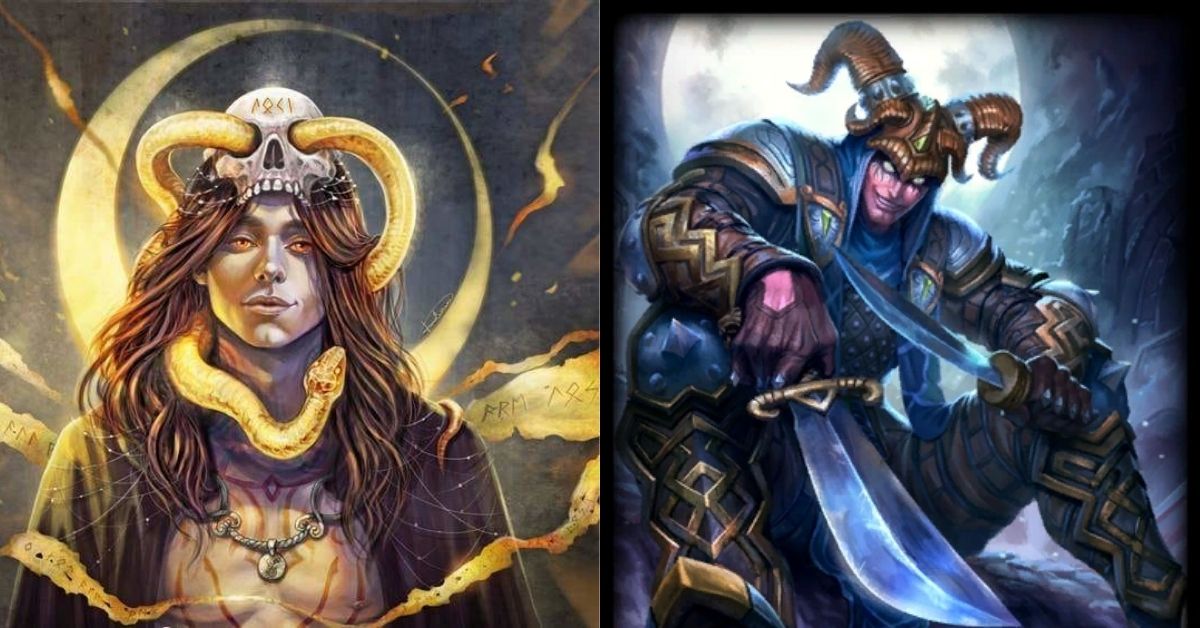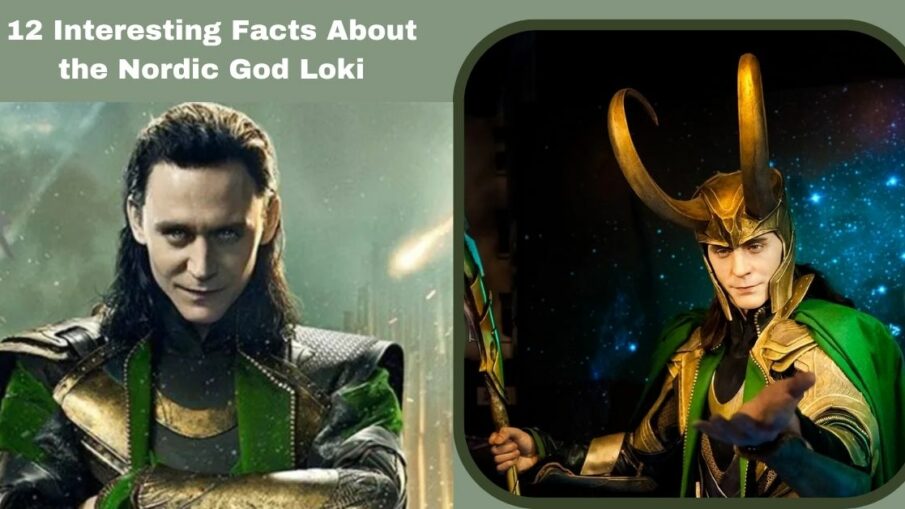While the majority of people may be familiar with Loki as the crafty trickster from Norse mythology, many fascinating details about him are still unknown. One of the most well-known characters from Norse mythology is Loki, the god of mischief, and because of Marvel’s adaptations, fans now adore him.
However, Tom Hiddleston’s pleasant, attractive, and dark-haired portrayal of Loki was far different from the “actual” Loki. Continue reading to discover 12 historical details about the god.
1. Loki Could Shapeshift
The trickster deity Loki was well-known for his mischievous and erratic behavior. He had a variety of abilities, which made him a formidable foe for the other gods. According to historical records still in existence, including Snorri Sturluson’s Icelandic Edda and the Poetic Edda.
One of his most notable powers was shapeshifting, which allowed him to change into a variety of animals and people. This helped him in his cunning and deceitful strategies against both his allies and adversaries. He had many other forms, including a bird that he famously used to fly to Jötunheim, the home of the giants.
2. Loki Could Control Fire

Some academics contend that Loki was the Norse deity of fire since fire is linked to wrath and anarchy. His putative parents’ names, Farbauti and Laufey, which mean “leaves” and “fierce strike,” respectively, have etymological meanings that support this relationship.
They stand in for how lightning striking leaves causes flames when combined. In addition, Loki is the Germanic root of “flame,” and the old Norse term logic means “fire” or “flame.”
Hel, the goddess of death, Jörmungand, the serpent wrapped around the world, and Fenrir, the wolf, Loki’s offspring with the giantess Angerboda, are also closely associated with fire and destruction as they are the ones who bring about Ragnarok, the end of the world, according to historical records.
3. Archaeological and Geological Links to Loki
Additional proof of Loki’s presence in Norse mythology comes from archaeology and geology. On a Danish Snaptun flat stone from the year 1000 CE, there is an image of Loki. Additionally, a mid-11th-century Gosforth Cross in Cumbria and a 10th-century cross at St. Stephen’s Church in Kirkby Stephen, Cumbria, England, both depict a bound figure with horns and a beard, thought to be Loki.
4. Loki’s Mistletoe Connection
In Norse mythology, there is a well-known tale about the demise of the god Baldr. The 18th-century manuscript SM 66, 75v claims that Baldr, the adored son of Odin and Frigg, foretold his demise in a dream, causing Frigg to command all living things and objects to swear an oath not to harm him.
Loki deceived Frigg into confessing that Mistletoe had not taken the oath because it was seen to be too young by dressing as an elderly woman. Loki used this information to craft a spear out of mistletoe and give it to the blind deity Hör to hurl at Baldr.
Baldr died quickly when the spear pierced his body. The gods attempt to raise Baldr from the dead in some versions of the tale, and mistletoe swears never to injure him again.
To access other similar facts, please click on the provided links to the articles below:
5. Loki’s Complex Family Dynamics
In Norse folklore, Loki’s parents are a topic of contention and misunderstanding. The original mythology differs from Marvel’s Loki, who is the biological son of Laufrey, the ruler of the Frost Giants of Jötunheimr, and the adoptive son of King Odin.
According to some tales, Laufrey is a woman, making his father Loki’s mother. According to various stories, Laufrey and Farbauti, two Frost Giants, were the parents of Loki. Like the rest of his race, Loki was born quite small. When the Asgardians attacked Jötunheimr, he was thought to have been abandoned by his parents before being adopted by Odin.
6. Loki’s Complicated Love Life
According to historical traditions like the Prose Edda, Sif, whom Loki and Thor knew from their early years, was Loki’s first love. After Sif wed Thor, jealous Loki took off her golden hair, but later made up for it by having two dwarfs create miraculous hair for her out of the darkness of the night.
The Prose Edda also names Sigyn as Loki’s wife, who gave birth to his two sons, Narfi and Vali, despite her presence in historical literature being comparatively scant.
7. Loki is Pans*xual
The ancient writings that have survived might suggest that Loki is pansexual because he acknowledges his attraction to people of any gender or species. Norse mythology makes reference to him having connections with Sif, Sigyn, Agryboda, and Svlifari, as well as many other males as he was a milkmaid.
The folktale of Thor and Loki dressing as women to steal the Jötun ruler Thrym’s hammer Mjolnir is also noteworthy. Loki is written using feminine pronouns even though Thor is referred to in the text using his male pronouns, a further indication of a gender disparity.
8. Loki’s Harsh Punishment
Loki receives the harshest of punishments in Norse mythology. The gods eventually capture him and punish the trickster twice for his numerous sins, particularly his part in Baldr’s death. A second son of Odin, Vali, first turns into a wolf and murders Narfi, Loki’s kid.
Then, as a serpent drenches Loki in poison, they bound him to a rock with Narfi’s entrails. To save her husband, Sigyn, a loyal woman, lays a bowl beneath the serpent, catching the toxic droplets before they hit Loki.
9. Loki Wielded Thor’s Hammer
The enormous hammer, Mjolnir, is widely believed to belong alone to Thor; nevertheless, Norse mythology has a slightly different interpretation. Legend has it that the same dwarves who created Sif’s black hair also created Mjolnir.
They and Loki bet that they couldn’t produce any finer treasures than the gods already possessed. So, the dwarves set to work and produced Mjolnir, among other beautiful creations.
10. Red-Haired Loki
Norse mythology describes Loki with red hair, a symbol of fire and chaos, in contrast to Tom Hiddleston’s fascinating portrayal of the dark-haired Loki in the Marvel Cinematic Universe. This may be related to the idea that, given Loki’s status as a Norse deity, his genetic makeup should have reflected that of the earliest Norse tribes, who possessed red hair and blue eyes as opposed to blond.
Later, in the 19th century, Loki was represented as a fifth Nordic Aesir journalist with black hair who was Semitic, representing his crafty and enigmatic personality.
11. Loki Was a Mass Murderer
In Norse mythology, Loki was accountable for a number of horrific crimes, including the murder of numerous gods and people. Baldr, the god of light and purity, was one of his most notorious victims. Baldr was quickly killed by a mistletoe-tipped arrow that Hör, Baldr’s blind brother, was fooled into shooting, as was recounted earlier.
As a result, Loki was finally punished for his part in the god’s demise. Along with killing Baldr, Loki also murdered the giant Jazi who had taken the goddess Idun’s magical apples by transforming himself into a bird and tricking him into a trap.
12. Loki Was Not Worshiped
In contrast to other well-known Norse deities like Odin, Thor, and Freyja, who had devoted cults and temples, Loki did not enjoy the same level of veneration in pre-Christian Scandinavia. Given that he was a noted con man and troublemaker, this may not be all that surprising.
But given his association with fire and chaos, which may have been employed to ward off bad spirits, some researchers hypothesize that he may have been venerated in circumstances including the winter solstice.
Hope you like it. Stay tuned with us on Thegeofacts.com for more amazing updates.


Leave a Reply